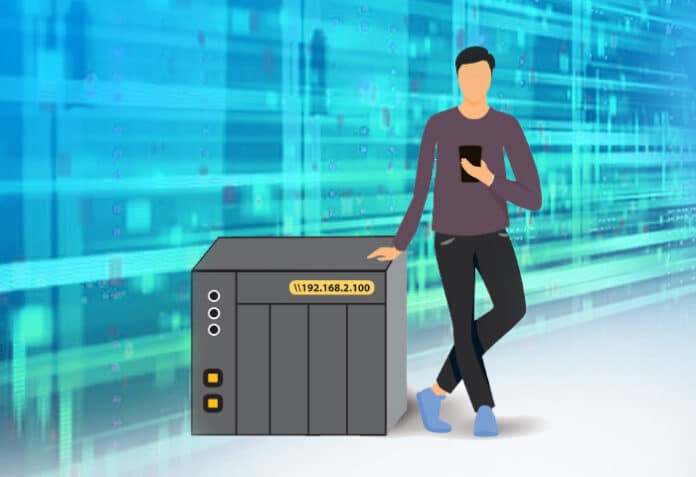Open source SAN and NAS solutions can be an excellent option for companies needing to store vast amounts of data. Although the setup and maintenance may require more technical skill, the resulting cost-efficiency, flexibility, control, and community support can all make it worth the effort.
Open source technologies play a critical role in providing cost-effective and flexible solutions to meet the storage needs of organisations. Open source software enables companies to customise and optimise their storage infrastructure to fit specific requirements and budgets. Its storage solutions offer scalability, high availability, performance, and security.
Storage area networks (SANs) and network attached storage (NAS) systems can be easily integrated with open source software such as Ceph, GlusterFS, and OpenFiler, which offer a wide range of features that are ideal for enterprise storage. Cloud computing and virtualisation have further enabled the adoption of open source storage solutions, making it possible to deploy them in hybrid environments, storing data both on-premise and in the cloud.
What are SAN and NAS?
SAN and NAS are two types of data storage systems used in a network environment.
A SAN is a high-speed network that connects multiple servers and storage devices over a dedicated network. It allows multiple servers to access the same storage devices simultaneously and provides block-level access to data. SAN is ideal for large-scale enterprises that require high performance, reliability, and scalability. Data is typically stored on arrays of high-speed magnetic disks and accessed via Fibre Channel or iSCSI protocols.
On the other hand, NAS is a file-level storage device that allows data to be stored and accessed over a network. NAS devices are essentially dedicated file servers providing data access to multiple users or applications. They use an IP-based file sharing protocol like NFS or SMB/CIFS to enable client systems to access data as if it were local. NAS systems are typically used for departmental or office-level applications, and are designed for user-level access to files such as documents, multimedia files, and databases.
In summary, SAN is a network designed for block-level access to storage, typically used in large-scale enterprises, while NAS is a network device that allows file-level access to storage, typically used in smaller-scale departments or offices.
Overview of open source software in SAN design
Open source software has become an increasingly popular option for designing SAN systems in recent years, as it enables individuals and organisations to take advantage of the community of developers who contribute to various software tools and frameworks.
Open source SAN design offers several benefits, including cost savings, flexibility, and the ability to customise tools and platforms to meet specific needs. Additionally, open source software often comes with strong reliability and security features, as developers are usually committed to ensuring the products they build are trustworthy and dependable.
There are many established and emerging open source software options for SAN design. Some of the most widely used platforms include ZFS, Ceph, DRBD, and GlusterFS. Each of these offers unique benefits, ranging from optimal storage utilisation to efficient data protection and replication.
Overall, open source software has become an integral part of the SAN design landscape, offering users a range of powerful features and resources for building robust and reliable storage networks. As the open source community continues to grow and evolve, we can expect even more exciting developments and innovations in the world of SAN design.
Advantages of open source software in SAN design
Cost-effectiveness: One of the most significant advantages of open source software in SAN design is its cost-effectiveness. The use of open source software is free and does not require any licensing fees, making it a great option for businesses with limited budgets.
Flexibility: Open source software is highly customisable, allowing it to be tailored to meet the specific needs of a business and SAN design. This flexibility permits businesses to add or modify features as necessary without worrying about the limitations of proprietary software.
Community support: The open source software community is vast and active. This means that businesses can benefit from peer feedback and support for issues that may arise.
Continuous development: Open source software is continually updated and improved upon, ensuring that businesses can benefit from continued development and bug fixes.
Disadvantages of open source software in SAN design
Security: The use of open source software requires the sharing of source code, raising potential security concerns as businesses may be hesitant to share their proprietary information.
Lack of vendor support: While the open source community can be a great resource, businesses may face a lack of dedicated vendor support when using open source software.
Limited compatibility with proprietary software: Open source software may not be fully compatible with proprietary software used by a business, which can lead to compatibility issues.
Potential for instability: Open source software may not be as reliable or stable as proprietary software, which can lead to downtime and increased risks.
A few open source software for SAN design
OpenSAN: A software-defined storage platform that allows users to create and manage their own storage infrastructure.
Ceph: A distributed storage platform providing unified object, block, and file storage. It is designed to scale to thousands of nodes and supports multiple storage protocols.
Openfiler: An operating system that provides networked storage capabilities, including iSCSI, NFS, and SMB/CIFS. It supports hardware RAID, encryption, and snapshotting.
Open-E DSS V7: A network storage software platform that supports NAS and iSCSI protocols. It provides high availability, failover, and snapshots for data protection.
GlusterFS: An open source, distributed storage system allowing users to create virtual disk resources that can be accessed over a network.
NexentaStor: A software-defined storage solution supporting NAS, iSCSI, and Fibre Channel protocols. It provides replication, snapshots, compression, and deduplication for data protection and efficiency.
LIO Target: A software package offering a framework for building iSCSI targets on Linux. It supports multiple initiators, authentication, and security features.
Overview of open source software in NAS design
Open source software has become increasingly popular in NAS design. NAS systems are used to store and share data between multiple devices over a network, and open source software provides an economical and versatile option for creating and maintaining these systems.
The collaborative nature of open source development also helps. A multitude of users and developers contribute to the development and improvement of the software, enhancing its quality and reliability. Consequently, NAS devices featuring open source software are often highly stable and secure.
Advantages of open source software in NAS design
Cost-effectiveness: Open source software is generally free of cost or has minimal licensing fees, making it more affordable for budget-conscious organisations.
Customisation: Users can tailor the software to meet specific business needs.
Flexibility: Open source software provides users with greater flexibility in terms of incorporating new features and making modifications.
Wide range of available applications: The open source community has developed a wide variety of applications, which can be easily integrated into a NAS system.
Security: Open source software is subject to scrutiny from a global community, leading to a more secure system.
Disadvantages of open source software in NAS design
Lack of support: Open source software often lacks dedicated technical support, requiring users to rely on forums and online communities for technical assistance.
Complexity: It can be more complex and harder to install and configure than proprietary software.
Compatibility issues: It may not be compatible with certain hardware or software, hampering system performance.
Quality control: Open source software is not always checked for bugs or issues before its release, potentially leading to system instability.
Reliability: It may not have the same level of reliability as proprietary software, potentially affecting business operations.
A few open source software for NAS design
There are several open source software options for NAS design.
OpenMediaVault: OpenMediaVault is a simple and user-friendly NAS operating system designed for users seeking a complete and ready-to-install NAS solution. It comes with several features such as support for RAID, remote access, and user management, and is built on Debian.
FreeNAS: FreeNAS is also popular open source software for NAS design, known for its flexibility, scalability, and reliability. It includes advanced functions such as support for ZFS, virtualisation, and plugins for cloud backup and multimedia streaming.
Openfiler: Openfiler is a Linux-based NAS/SAN platform that offers several file systems and protocols, including SMB/CIFS, NFS, HTTP/HTTPS, and FTP. It also provides features for multiple disks, LUNs, and RAID.
NAS4Free: NAS4Free is lightweight NAS software that is designed for small businesses and home users. It offers support for various file systems such as ZFS, UFS, and EXT.
Rockstor: Rockstor is open source NAS software that comes with several features such as support for Docker plugins, Btrfs file system, and snapshots. It can be installed on any hardware platform and offers smooth integration with cloud services.
Trends in the industry
Here are some general trends in and characteristics of SAN and NAS design.
SAN trends
Convergence: The convergence of SANs with Ethernet-based networks has been happening for some time now. It allows for greater flexibility and cost savings.
Flash storage: Flash storage’s speed and efficiency make it ideal for SANs. As the cost of flash storage continues to decline, it is becoming more popular for use in SANs.
Software-defined storage: Software-defined storage (SDS) is gaining popularity for SANs. SDS allows for greater flexibility and scalability by separating the control plane from the data plane.
NAS trends
Hybrid cloud: Many organisations are adopting a hybrid cloud approach to their NAS design. This approach allows them to leverage both on-premise and cloud-based storage for greater flexibility.
Increased security: With the growing volume of data stored on NAS devices, security becomes a greater concern. Many NAS devices now include advanced security features such as encryption and access controls.
Integration with backup and disaster recovery: NAS devices are often used for backup and disaster recovery purposes. Many NAS devices now include built-in backup and disaster recovery tools, making these tasks easier and more efficient.
Forecasting the future
Forecasting the future of SAN and NAS design involves predicting how these technologies will evolve and adapt to meet changing storage demands and emerging technologies. Some potential trends that could impact SAN and NAS design include:
Data growth and the need for scalable storage solutions: As more data is generated by businesses and consumers, SAN and NAS storage solutions will need to be scalable to accommodate the increasing storage demands.
Rise of cloud-based storage: Cloud-based storage solutions offer a flexible and cost-effective option for storing data, which may impact the demand for on-premise SAN and NAS storage solutions.
Proliferation of IoT (Internet of Things) devices: As more devices become connected to the internet, SAN and NAS solutions may need to adapt to efficiently manage the large volumes of data generated by these devices.
Advances in flash storage: The continued development of flash storage technology is likely to impact SAN and NAS design, as flash storage can offer significantly faster data access speeds compared to traditional storage solutions.
Overall, forecasting the future of SAN and NAS design involves considering factors such as data growth, emerging technologies, and shifting business needs to predict how storage solutions will need to evolve to remain effective.
Final thoughts
Here are some final thoughts and recommendations for open source SAN and NAS design.
- Open source SAN and NAS solutions provide businesses with cost-effective and flexible storage options. They offer a significant cost advantage over proprietary solutions and can be customised to meet unique business needs.
- These solutions are fully transparent, giving users complete control over configurations, updates, and upgrades.
- Community support is essential for open source SAN and NAS solutions. A strong community can help refine the design and functionality of these solutions, which ultimately benefits everyone.
- Security is of utmost importance in SAN and NAS design. User and data safety must be maintained, and open source solutions must keep pace with existing security threats.











































































